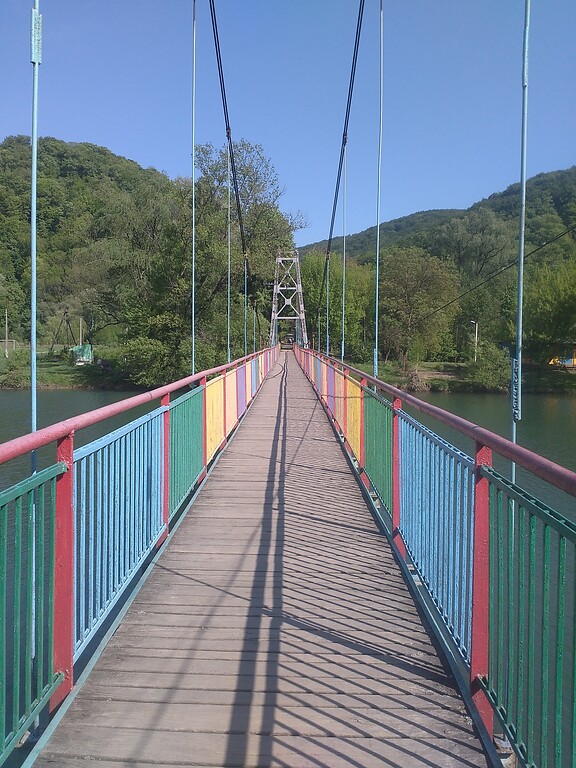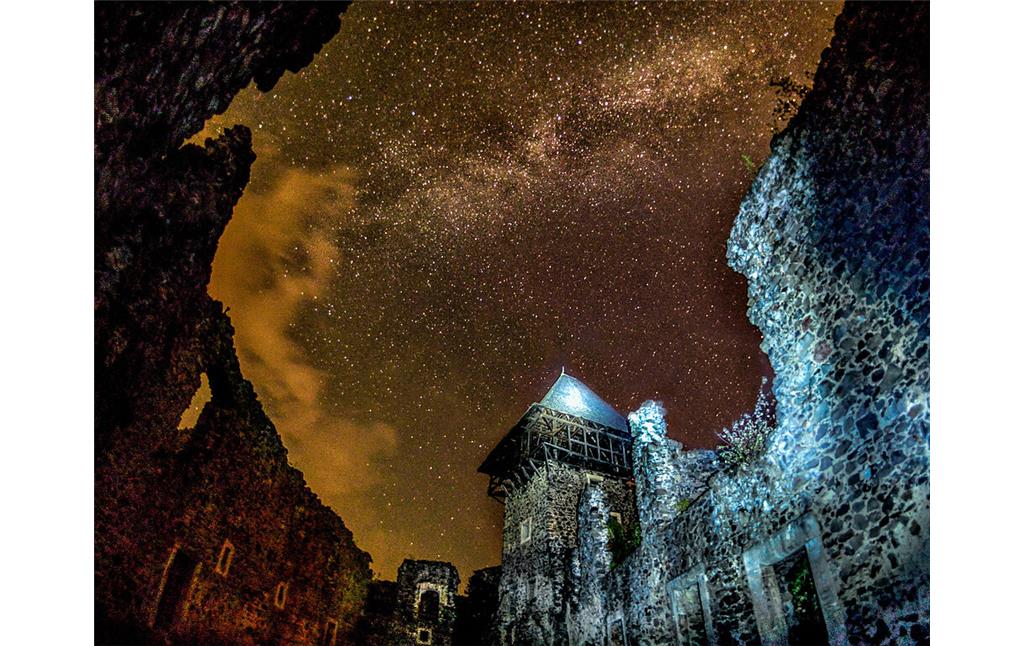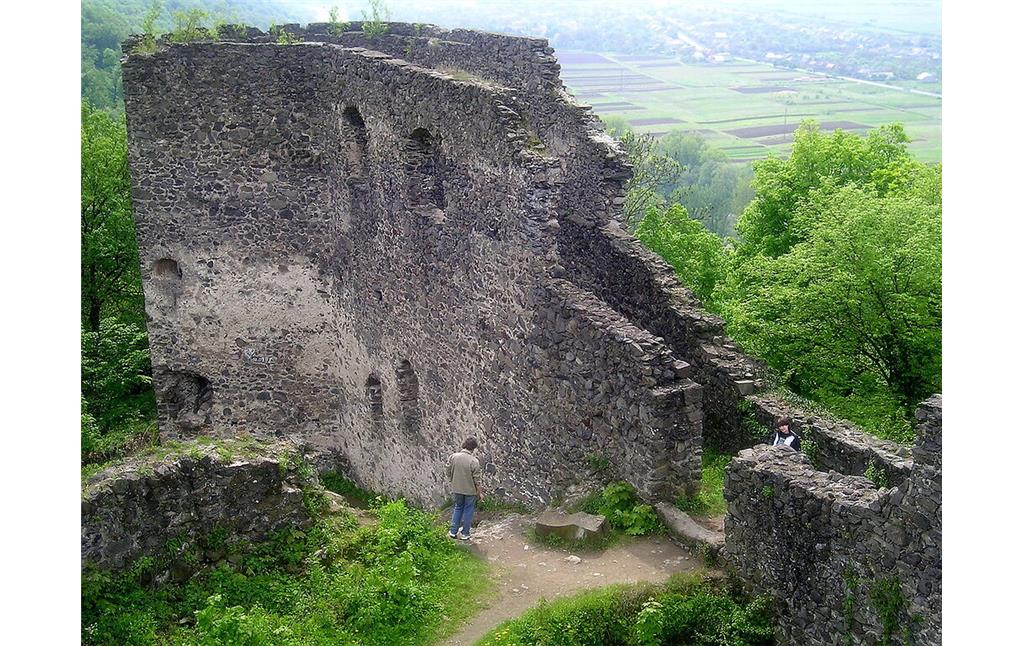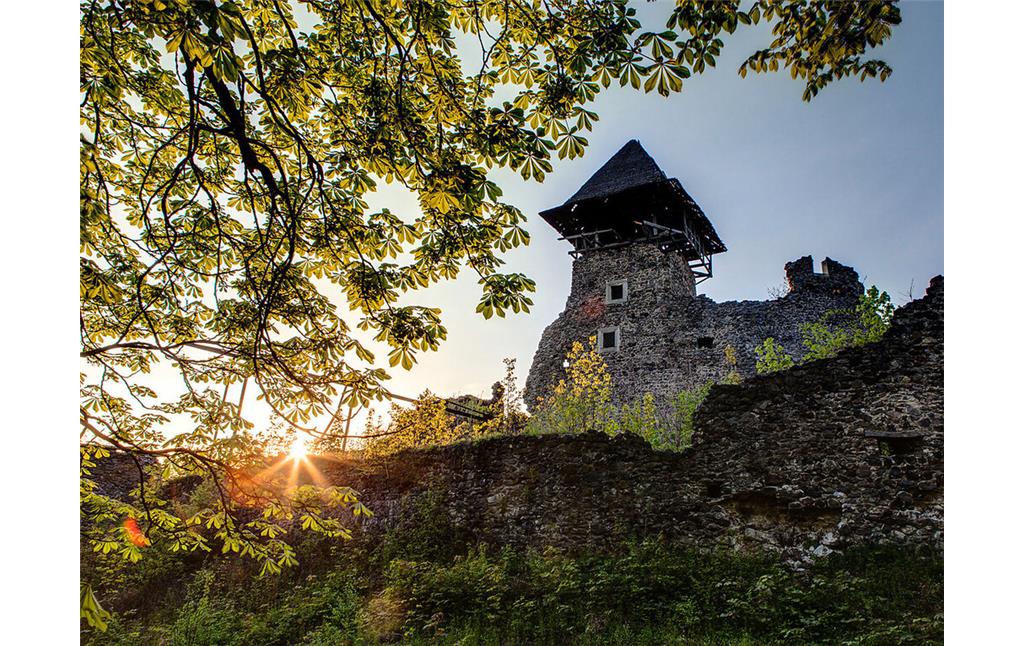
Medieval Hungarian and Italian spirit in the castle
The first written mention of Nevytske Castle was in 1274, when it belonged to the Hungarian king Ladislaus IV (1262-1290). According to archaeological data, at first it was a round stone donjon tower surrounded by wooden and landed fortifications. In 1279, Ladislaus IV appointed the Hungarian magnate Finta Aba (?-1287) ruler of the Ung County and owner of the castle. After Finta's death, his brother Amadeus Aba (?-1311) became the owner of the county and, in particular, the castle. Probably, during his reign a new, square donjon instead of a round one and a draw-well for collecting rainwater were built.
In 1317, the descendants of Amadeus Aba rebelled against the Hungarian king Charles I (also known as Charles Robert (1288-1342)), whom’s army in the same year took Nevytske Castle by assault. János Drugeth (also known as I. Drugeth János (1288-1333)) became the new owner of the castle, whose descendants owned the castle until the 17th century. In the middle of the 15th and the beginning of the 16th century, the castle was radically rebuilt and it received the today known form.
Due to the relief, the castle has an irregular shape. The core of the castle is an oval courtyard formed by two-storey stone buildings. A four-tiered tower rises above one of the buildings in the southeastern part of the courtyard. The second line of defense is formed by a rampart with a stone wall with four towers. The third line of defense is a rampart, under its protection existed residential and commercial buildings. All three lines of defense are complemented by moats. The main entrance is organized from the south-west and is a hexagonal gate tower (known as Barbican or Yutyda’s Tower) brought out to the outside, from which a corridor formed by two parallel walls leads into the castle. In front of the gate, which was arranged in the second tier of the tower, a wooden bridge was thrown across the moat. Drugeths were originally from Italy and used stained glass in the decoration of the castle; there is an historical fact, that one of them was personally acquainted with the Italian artist, the forerunner of the Renaissance – Giotto di Bondone (1267/1276-1337).
At the end of the 16th and the beginning of the 17th century, several hostilities took place in Nevytske Castle. That led to frequent changes of ownership. In 1619, the castle was seized by the Prince of Transylvania Gabriel Bethlen (1580-1629). After his death, it was returned to the Drugeths, who were supporters of the Habsburg Monarchy and opponents of Rákóczi. In 1644, George I Rákóczi (1593-1648) took possession of the castle, which was destroyed by his order.
Nevytske Castle and principle of communicating vessels
Nevytske Castle was not only a militarized fortress, but also the center of medieval metallurgy. Jewelry and weapons repair workrooms, a forge and a foundry were located here. In the Middle Ages, the territory of the castle was much larger than today and approximately 500 people lived in the castle.
For such a high number of residents, continuous water supply had to be provided. In the middle of the 15th century, architects found an original and very simple solution: an aqueduct of wooden pipes was built on the principle of communicating vessels. East of the castle mountain exists a higher mountain; a bridge connects both mountains with a small height difference. The higher mountain has the shape of a plateau, and there was a whole cascade of draw-wells and a well-disguised water reservoir. From it and with the help of natural pressure, through a relief bridge between the heights, water entered the castle mountain and directly into the outer castle moat.
A similar aqueduct that was built in 1468 existed in Blankenheim Castle (Germany). In the middle of the 17th century, the French scientist Blaise Pascal (1623-1662) also described such a system.
Tourist attraction since 19th century
During the times of Austria-Hungary, the picturesque area near Nevytske Castle was a favorite vacation place for wealthy families who came to rest from Vienna, Budapest, Prague and Bratislava. In 1874, the famous Hungarian forester, author of the forests law Károly Wagner (1830-1879) planted a linden alley here. In 1879, the Forestry Administration created a park in honor of Wagner with almost 60 species of exotics and relics, a fountain and a memorial obelisk. The fountain worked with the help of natural pressure (the same principle as in medieval times). In 1886, a scientific conference for foresters of Austria-Hungary was held on the territory of the castle, in honor of which a yew grove was planted in the outskirts of the castle and an observation deck was equipped.
The castle lies on an old volcano (125 Meter above sea level) what leads to an elevated position compared to the surrounding. From the towers of the castle, a panorama of the Slovak and Ukrainian parts of the Volcanic Carpathians, the Uzhanska Valley and the Middle Danube Lowland opens up. The famous French science fiction writer Jules Verne (1828-1905) visited Nevytske Castle in 1892. The mysterious landscape of the castle and its surroundings allegedly inspired Verne to write the novel „The Carpathian Castle” (1889).
The elevated position of the castle led to a military significance. During the First World War, the park suffered significant destruction due to the presence of an Austro-Hungarian regiment that was quartered there in 1914-1915. During the Second World War, the castle was again used by various forces during the hostilities.
In the 1960s and 1970s, the outskirts of the castle became a popular leisure destination again, as a youth camp and recreation center were located here, also restoration and conservation work was carried out. Since 1989, archaeological research of the castle has been carried out under the leadership of historian Oleksandr Dzembas. In 2019, a virtual reconstruction of Nevytske Castle during its heyday was developed, but it should be noted that the stone fortifications, castle walls and towers that have survived to this day also require real reconstruction.
(Maryana Senkiv, ukrainer.net & Lviv Polytechnic National University, 2020)
Internet sources
archaeology.com.ua: Замок, який міг би стати перлиною ЮНЕСКО, руйнується на очах
en.wikipedia.org: Nevytske Castle
en.wikipedia.org: Zakarpattia
karpaty.love: Історія Невицького замку
nevitsky.com.ua: Невицький замок
nevitsky.com.ua: Від короля Шаробера до князя Ракоці
varosh.com.ua: Зберегти не можна забути: гра-реконструкція Невицького замку XVI століття



















